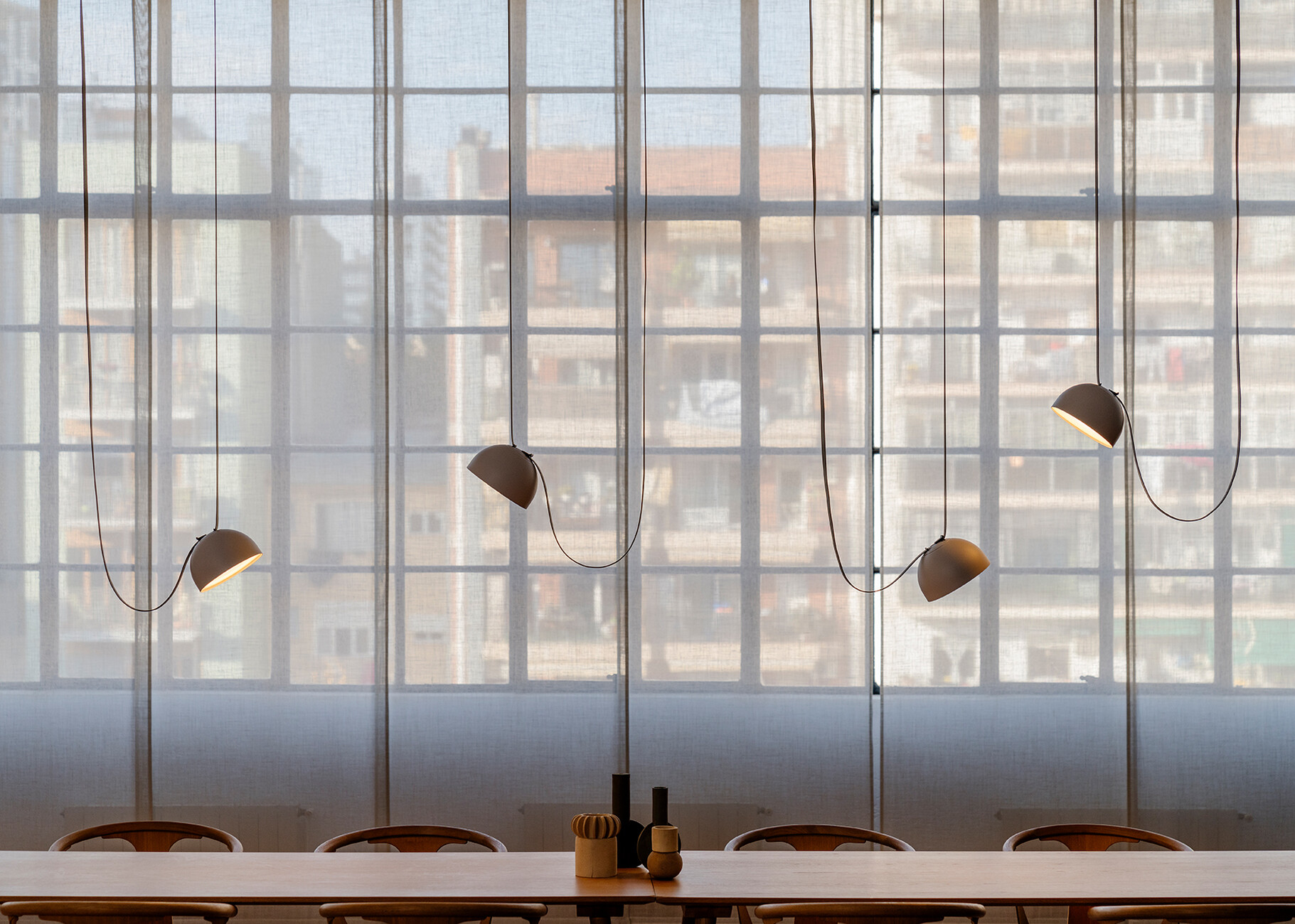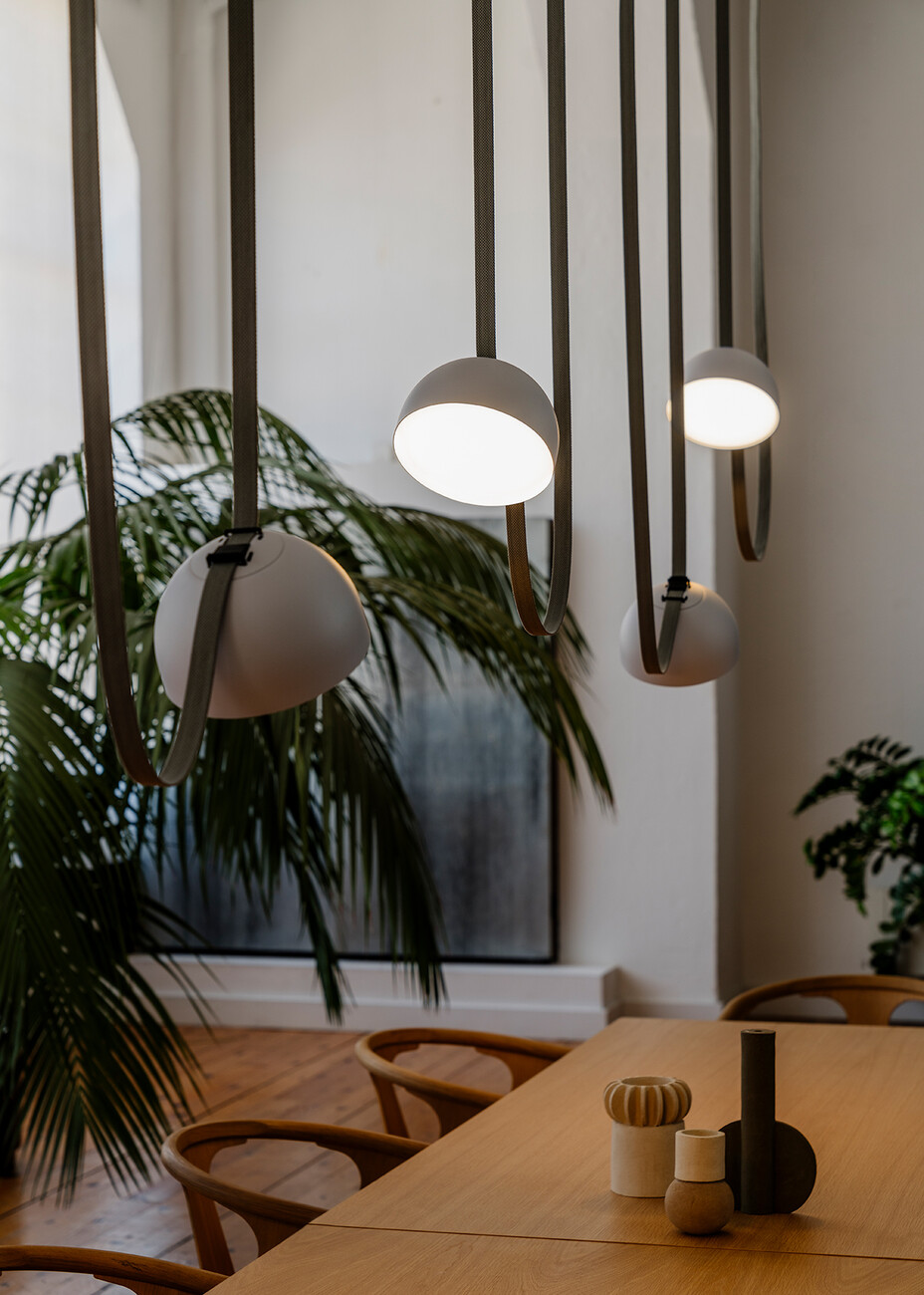Three questions to Stefan Diez
Anna Moldenhauer: Stefan, to what extent does the "Plusminus" lighting collection differ from the original prototype?
Stefan Diez: At first glance it does not at all, but in terms of the details we have changed practically everything. Starting with the structure of the strip through to the way the luminaires are fixed to it by means of a system of clip connectors. You can now set the lights in any position and is child's play. We have also been able to improve the quality of the LED light enormously. In addition, we offer an extensive configurator on the Vibia website. All of the "Plusminus" system components are mutually compatible. The "Plusminus" collection is a toolbox which thanks to the wide range it contains enables you to find solutions to an incredible number of lighting problems. I think architects and lighting designers today need investment certainty, and "Plusminus" certainly offers that. In this regard, Vibia has even dedicated an entire floor of the company to in-house production of the luminaire. In the near future, we will be presenting the system at a number of shows, including the Design Post during the imm cologne 2022.
As regards the textile mounts, did you have to solve structural issues ready for the market launch?
Stefan Diez: Plusminus is based on a textile strip that conducts electricity and a variety of lamps that can be positioned anywhere on the strip and then repositioned at will. The strip was developed in close cooperation with Berlin-based The Textile Prototyping Lab and textile designer Karina Wirth specially for "Plusminus" and Vibia. Even if several lamps are mounted on a single strip, each of them can nevertheless be switched on and off or dimmed separately. The textile strip possesses a great tensile strength, so that it can be pull taut over distances of many meters or hung with slack, whereby the strips can also touch. There is a whole raft of components for fastening and tensioning the strips.
The textile element was decisive in many respects. The conductor path woven into the textile strip and remains invisible from the outside. The lamps connect to the conductor path via a coupling that can also be used to connect up two or more strips. Even if the ribbons touch each other, there is no short-circuit, so they can be hung with as much slack as you want. Together with The Textile Prototyping Lab, we were able to develop various different versions of the textile strap, which provides the electrical current and to which the lamps are simply clipped intuitively. Combining the expertise of the different members on the team proved incredibly helpful. In order to develop a product idea freely, designers need some kind of backup, and that was therefore at hand. Creative networking can unleash a lot of potential with little effort.
PlusMinus provides a perfect toolbox for interior lighting given the array of different lighting solutions it offers - what fascinates you in particular about flexible, modular designs?
Stefan Diez: The creative scope you get is simply that much greater. Compared to a self-contained product, with a modular system you can react individually to the most diverse of spatial situations. Meaning you can involve the architects and lighting designers in the creative process. A comprehensive toolbox allows you to approach things in a fundamentally different way. “Plusminus” emancipates the lighting installation from the architecture and is extremely versatile in that it can forever be assembled in new configurations, or for that matter expanded. A configurator is therefore available on the Vibia website for planning purposes. Many customary practices, such as he electrical installation in a room, are still largely based on principles that originated 100 years ago. We need to be more radical in our approach – and that includes questioning what we take for granted. If we think on a larger scale, projects are usually expensive and take time, but in the ideal case you arrive at solutions that are substantially different from anything previously. “Plusminus” is a biosphere of its own. In the form of Vibia, we have also found a partner for this project who is passionate about what it does and really champions developing things together. As a result, in the course of almost four years this extensive system was created in very close collaboration with Vibia and Arthur Desmet.





























